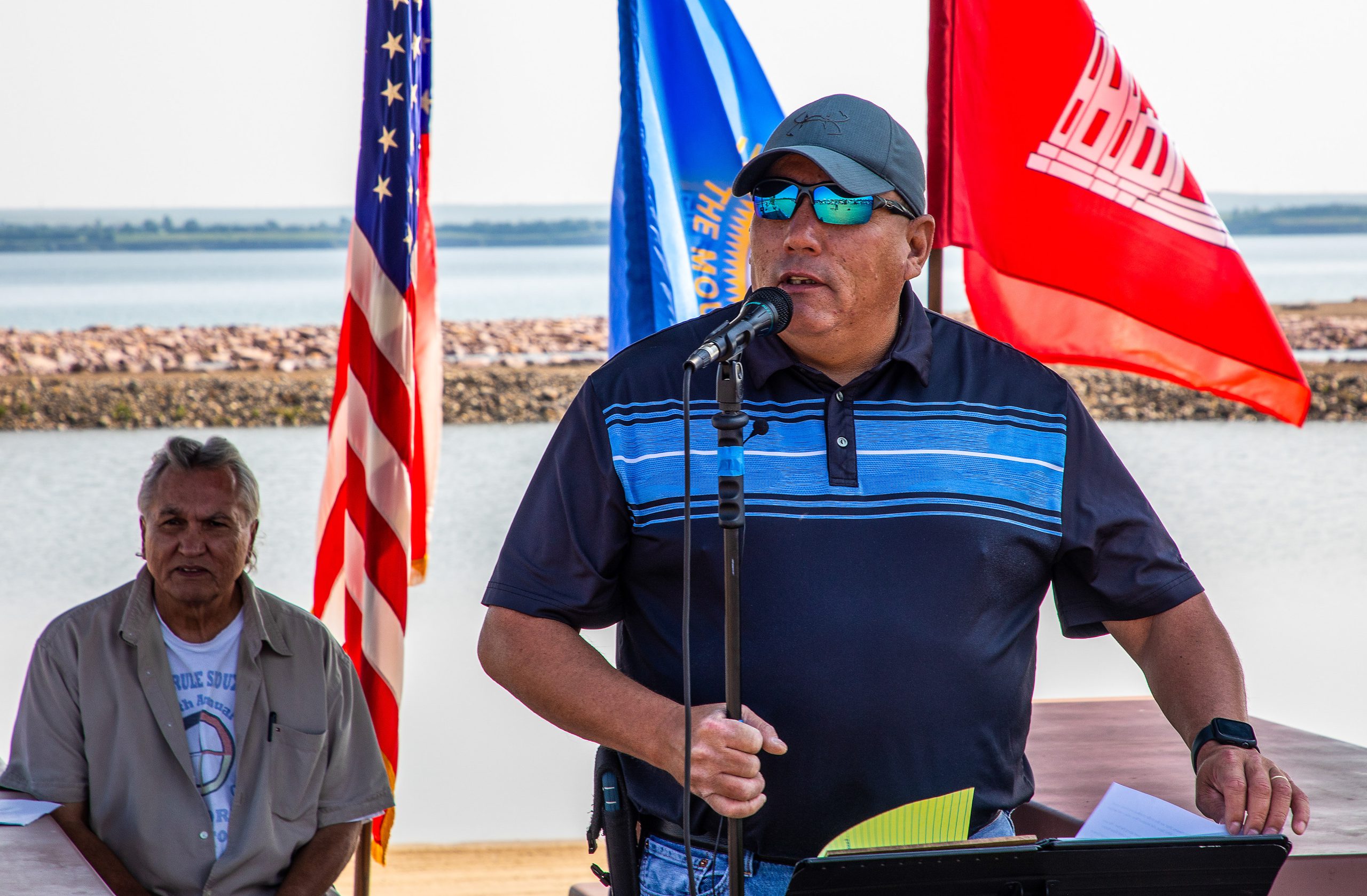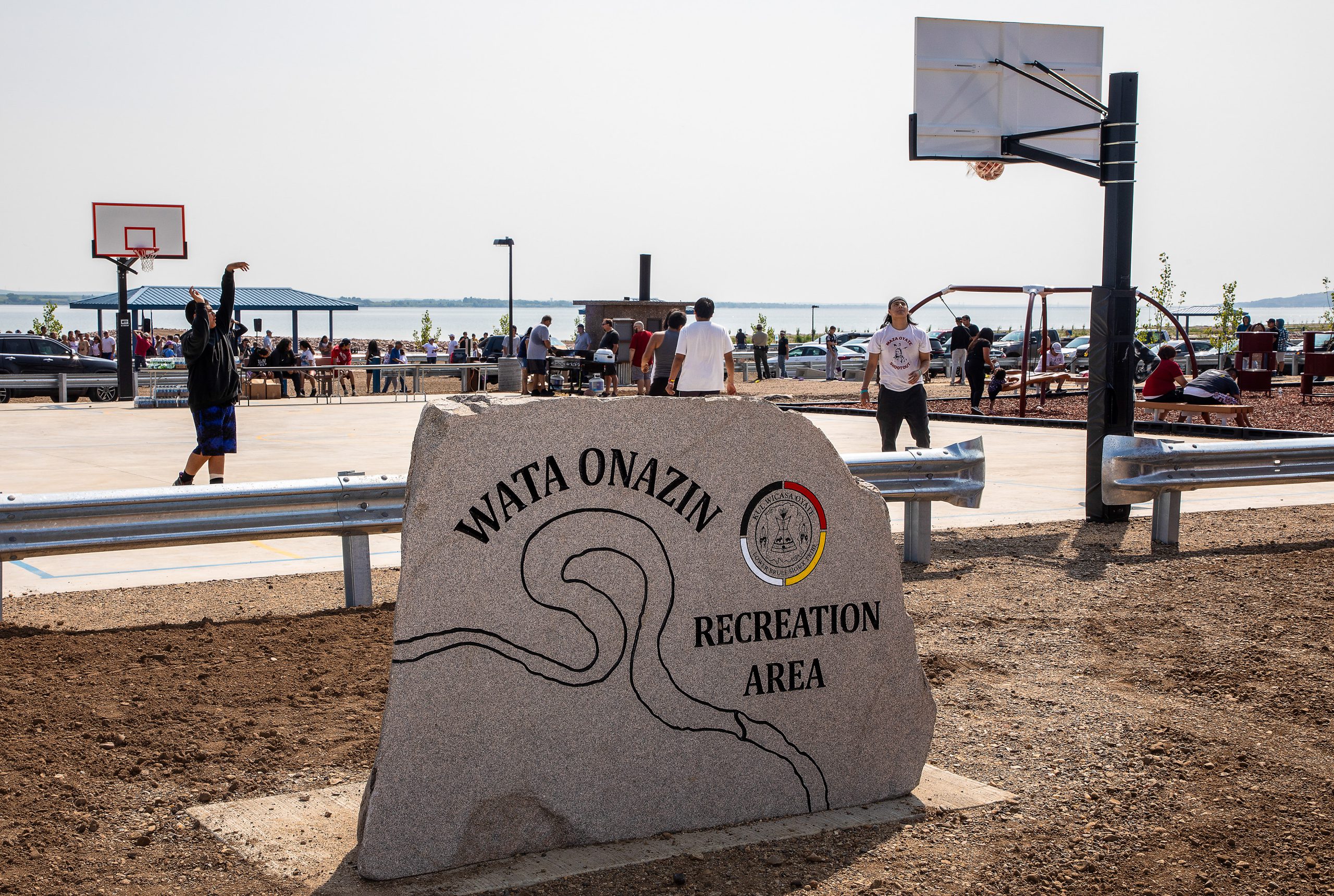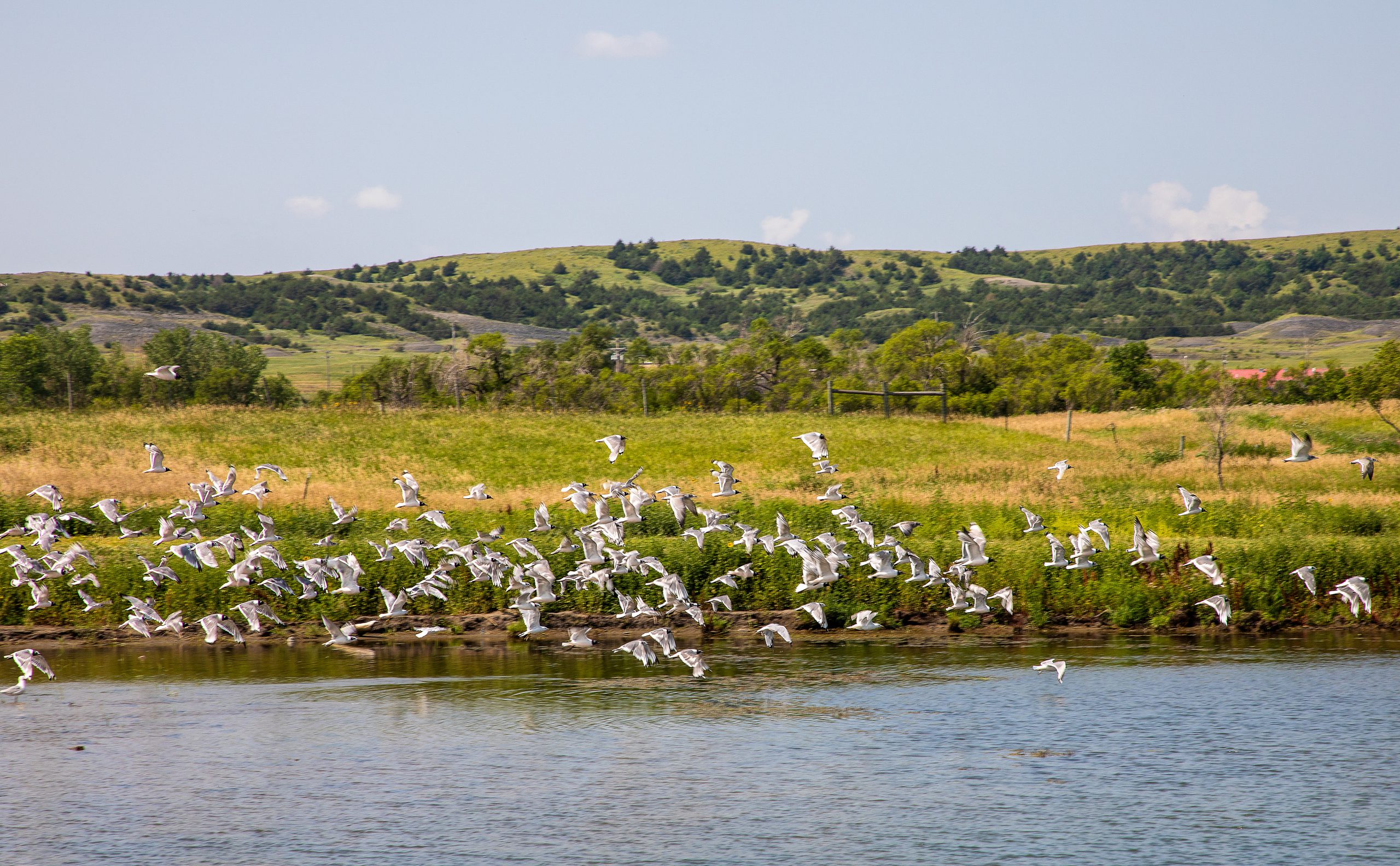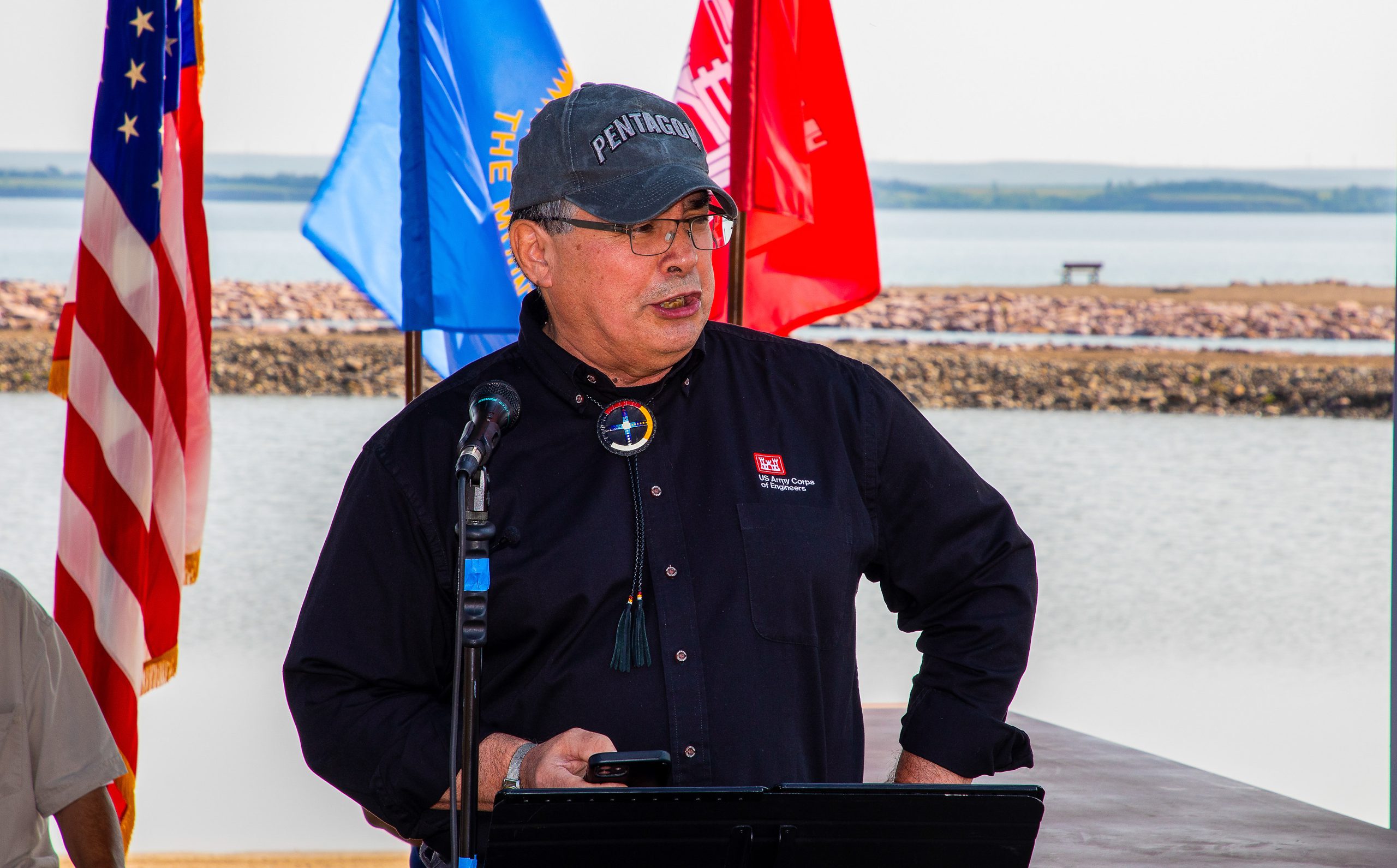Indianz.Com > News > DVIDS: Lower Brule Sioux Tribe protects homelands from climate change

Omaha District completes first construction project under Tribal Partnership Program
Wednesday, August 16, 2023
U.S. Army Corps of Engineers, Omaha District
DOD DVIDS
The U.S. Army Corps of Engineers, Omaha District recently completed an $11.6 million project in partnership with the Lower Brule Sioux Tribe to address erosion of shoreline banks in Lower Brule, South Dakota.
Ice and wave action from Lake Sharpe has steadily eroded LBST land since the Fort Randall and Big Bend Dams became operational in 1956 and 1966. Prior studies have shown that the shoreline along the project area was eroding at a pace of approximately 13 feet per year resulting in more than 500 acres of lost land. As a result, environmental habitats were degraded and wastewater sewage lagoons that service the LBST were threatened.
“The whole part of this project to really remember and think about is protecting the shoreline – to protect the land here now,” said LBST Chairman Clyde Estes during a ceremony July 21 to mark the completion of the project and opening of the Wata Onazin Recreation Area. “This is a very, very important project and is just one of many that we’re trying to keep pushing forward to stabilize our shoreline to protect the erosion of our Tribal homelands.”



Col. Mark Himes, U.S. Army Corps of Engineers, Omaha District commander, tours the Lower Brule Sioux Tribe natural resources preservation and ecosystem restoration project July 21, 2023, in Lower Brule, South Dakota. The Tribal Partnership Program construction project was recently completed by the U.S. Army Corps of Engineers, and this first to be completed in the Nation. (U.S. Army photo by Delanie Stafford)
DVIDS (Defense Video Imagery Distribution System) is a state-of-the-art, 24/7 operation that provides a timely, accurate and reliable connection between the media around the world and the military serving worldwide. This article is in the public domain.
Search
Filed Under
Tags
More Headlines
President Trump’s ‘love’ for Lumbee Tribe only goes so far in fight for federal recognition
Native America Calling: Native American representation in television news
Native America Calling: Native youth building the foundation for future leadership
Republicans forced to defend record on Indian issues at start of new Congress
Native America Calling: How it started, how it’s going with Donald Trump
President Trump targets Indian education in first round of executive actions
House Committee on Natural Resources convenes for first meeting
Alaska Beacon: Republicans oppose President Trump on Native name change
Native America Calling: Is the Antiquities Act an antique?
Austin Kaus: The world is less funny with the passing of ‘The Indian’ Terry Ree
Peoples World: Indigenous Peoples Coalition secures name change for historic park
Arizona Mirror: Lawsuit filed over sober living home scam targeting Native people
Cronkite News: ‘Navajos 4 Trump’ traveled to nation’s capital for inaugural parade
NAFOA: 5 Things You Need to Know this Week (January 21, 2025)
Native America Calling: ‘It’s finally over – I’m going home’
More Headlines
Native America Calling: Native American representation in television news
Native America Calling: Native youth building the foundation for future leadership
Republicans forced to defend record on Indian issues at start of new Congress
Native America Calling: How it started, how it’s going with Donald Trump
President Trump targets Indian education in first round of executive actions
House Committee on Natural Resources convenes for first meeting
Alaska Beacon: Republicans oppose President Trump on Native name change
Native America Calling: Is the Antiquities Act an antique?
Austin Kaus: The world is less funny with the passing of ‘The Indian’ Terry Ree
Peoples World: Indigenous Peoples Coalition secures name change for historic park
Arizona Mirror: Lawsuit filed over sober living home scam targeting Native people
Cronkite News: ‘Navajos 4 Trump’ traveled to nation’s capital for inaugural parade
NAFOA: 5 Things You Need to Know this Week (January 21, 2025)
Native America Calling: ‘It’s finally over – I’m going home’
More Headlines
